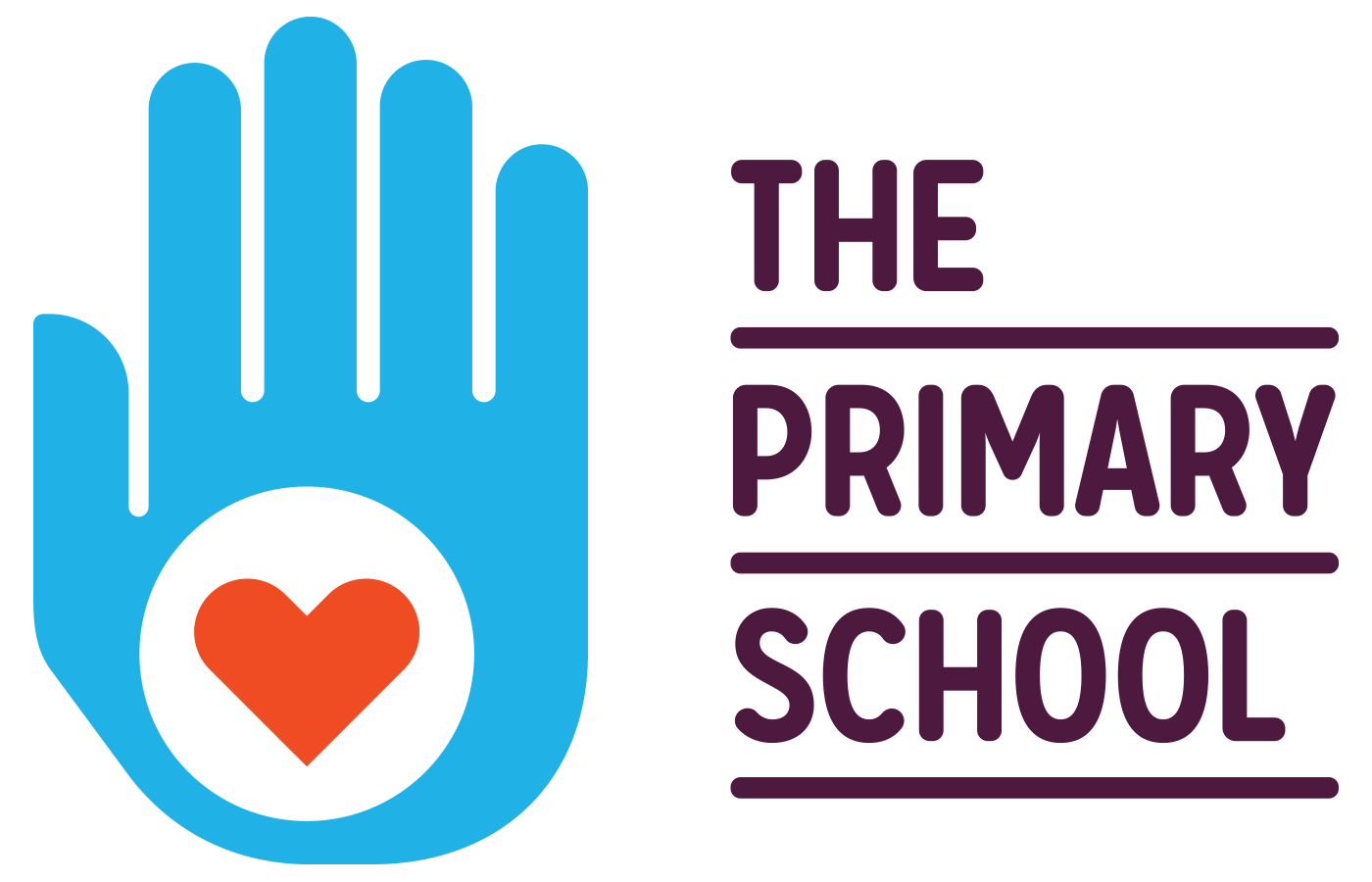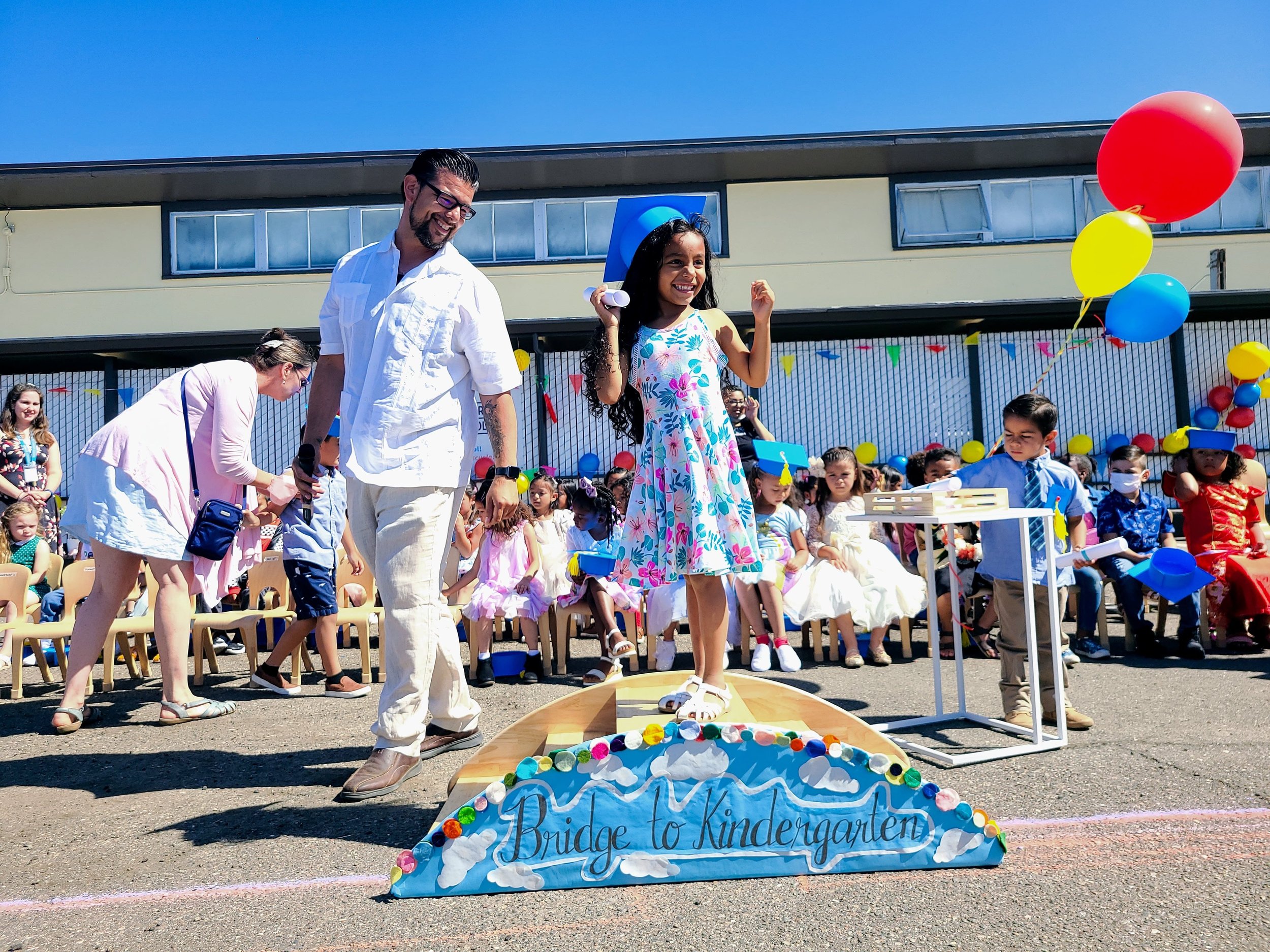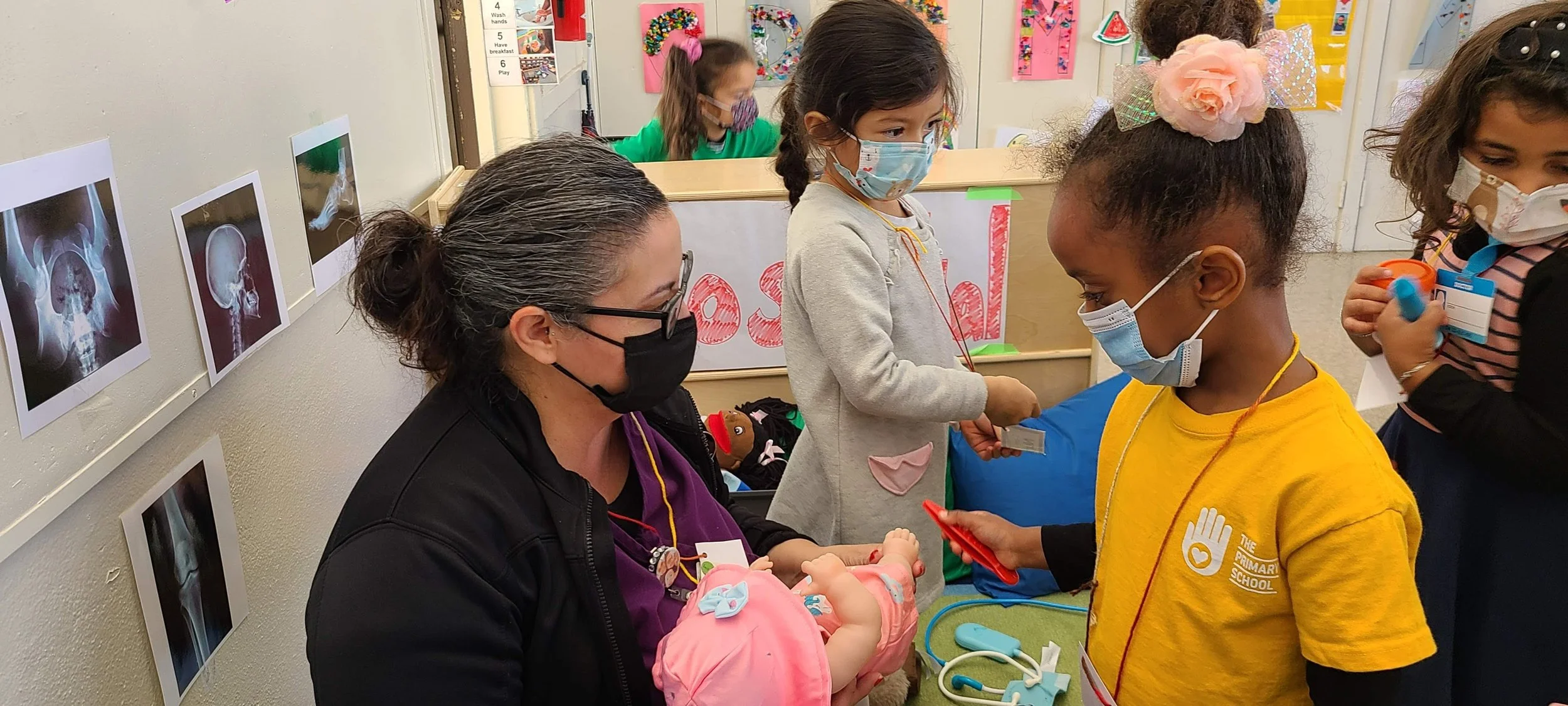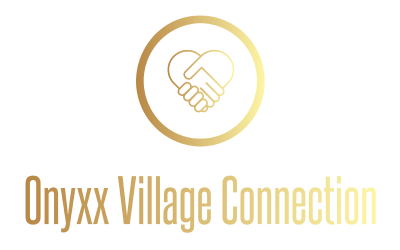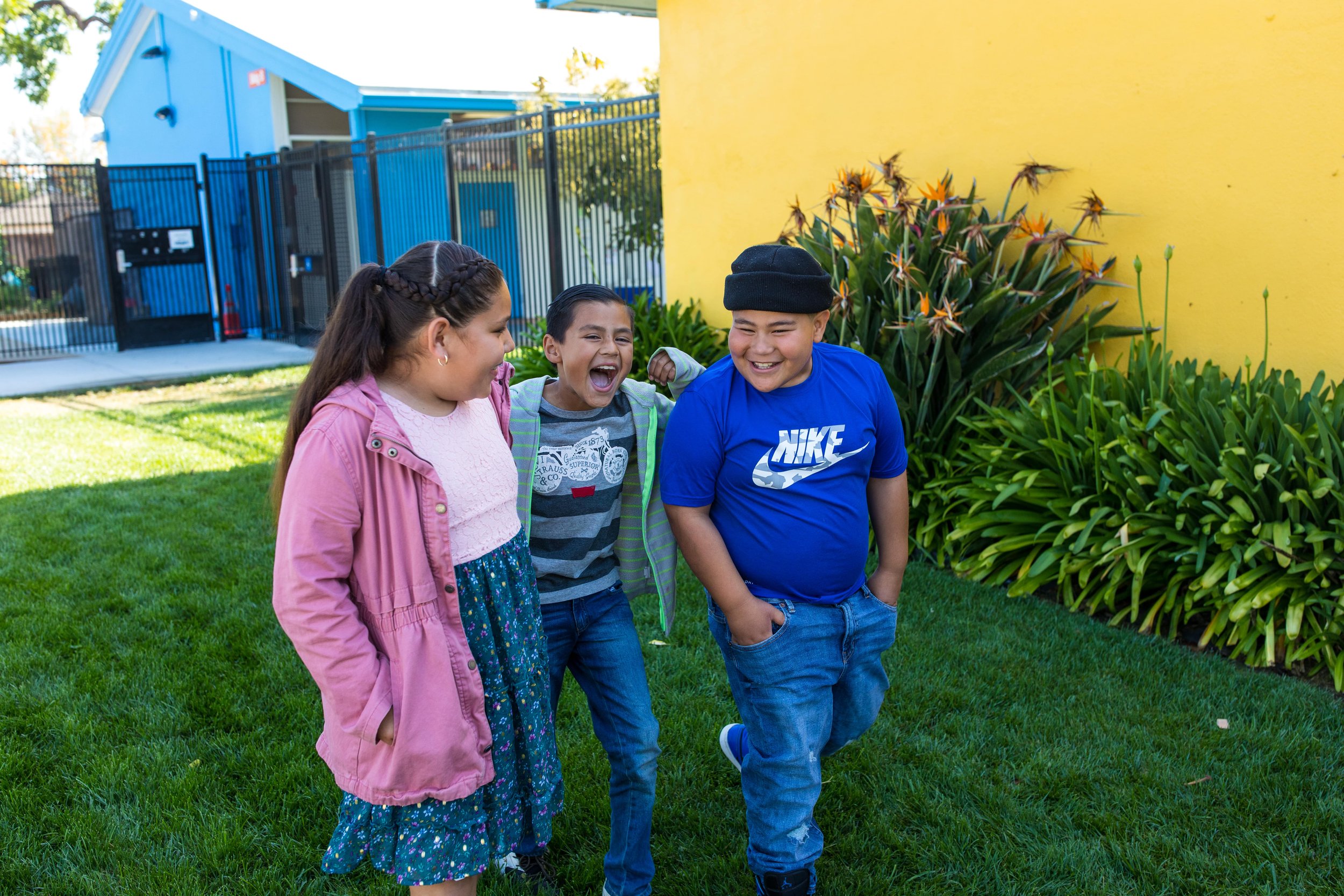
OUR MISSION
We are creating a new school model that brings together all of the adults in a child’s life, including parents, educators, and medical and mental health providers, starting from a very early age. Our aim is that children and families most impacted by systemic poverty and racism receive the support they deserve to be well, learn, and thrive.
A MESSAGE From Our CEO
Dear friends,
After two years of hybrid learning environments, our school communities experienced immense joy with the full re-opening of our East Palo Alto site and the launch of our East Bay site! Fully opening both school sites was the result of collaboration between many teams. Health and operations teams refined and implemented COVID safety protocols; school staff balanced academic and mental health priorities; parent wellness coaches provided parents a space for personal connections and resources; our Birth to Three team supported language and social emotional development for our youngest learners; partners provided unique resources in many forms to make it all possible. And most of all, families trusted us with the education and safety of their children. We are so grateful that all of these groups came together to make a full year of in-person learning a reality.
Returning to in-person learning made the academic and social-emotional impact of the pandemic clear — our students need our support more than ever. At our East Palo Alto site, we committed to investing in a multi-year COVID recovery effort. Our academic team is adding intervention teachers who will support our upper elementary students with small-group instruction to advance their academic progress. We are also welcoming an additional mental health clinician over the next two years to support student wellness. Our whole-child model recognizes the effects that social-emotional wellness has in the classroom, and it is critical to address growing mental health needs.
After being delayed by a year, we were so excited to open our second site in the East Bay! Our first cohort of pre-K students learned how to express their ideas, share, and play with others, among many other important academic and social-emotional skills. It’s hard to believe that our first cohort of pre-K students has already graduated! We celebrated their growth and learning with a graduation ceremony at the end of the year. This fall, we welcomed our second cohort of students and look forward to continuing to grow together.
While this past year marked the beginning of many endeavors, it also marked the closing of our 2020-2022 strategic plan. At the outset of this strategic plan, we committed to three core priorities, not yet knowing how COVID-19 would dramatically change our world. Along the way, we have made tremendous progress toward our goals, but we have also shifted based on new learnings and changing environments. As we enter a new season of growth, we are excited to share a new five-year strategic plan with our community and partners in early 2023.
Looking ahead, I am hopeful for what this next year will bring. More calm, more connection, more community, and more growth. I am so proud of our whole community for the resilience and care it has continued to take to navigate this past year. Thank you for continuing with us on this journey of building an innovative, whole child, two-generational model and we look forward to sharing about the next phase of this work.
In community,
Courtney Garcia
CEO, The Primary School
PROGRESS ON our Strategic Priorities
Over the past three years, we worked on three strategic priorities that guided us towards a new stage of growth. As we close out the final year of the 2020–2022 Strategic Plan, we look back on the progress we have made in each of the priorities. Although the pandemic required us to alter our plans at certain points, we are proud that we continued to advance toward achieving our goals.
Deepen Impact AND Learning in East Palo Alto
In East Palo Alto, we supported children and families through a new phase of the pandemic and planned and launched COVID-19 recovery efforts.
Extend Impact AND Learning Through Partners
After months of thoughtful planning, we opened our second site to our first cohort of pre-K students in the East Bay.
Build a High-Impact, Equity-Centered Organization
We launched the first phase of our multi-year DEI plan and provided new opportunities for staff and family input through board roles and staff decision making structures.
STRATEGIC PRIORITY 1
Deepen Impact & Learning in East Palo Alto

We better understood the academic and social-emotional gaps created by the ongoing pandemic, and created and implemented strategies to address them.
Kindergarten students prepare to welcome families to their end of unit share-out.
After returning to full in-person learning, our school team came together to learn from many of the ongoing challenges created by the COVID-19 pandemic. One of our learnings was the importance of small-group instruction, which we emphasized during the pandemic and continued when we returned to in-person instruction. Returning in-person also enabled us to begin the full implementation of EL Education’s content-based language arts modules. Reading and writing about science and social studies content deepened students’ reading comprehension by connecting fiction and non-fiction literature to tangible, real world topics.
Teachers, students, and parents worked harder than ever. As the year went on, we recognized that the learning loss and mental health impacts of the pandemic would take years to address. In response, the school team created and launched a five-year COVID-19 Recovery Plan. This plan enabled us to hire additional teachers and support staff, including mental health clinicians, to accelerate our upper elementary students academically and social-emotionally.
Additionally, we began the planning process for our middle school program, which will open with 6th grade in the 2023-2024 school year and realize our initial vision for a school program from preschool to eighth grade. Through multiple community engagement opportunities, families reaffirmed their commitment to designing the middle school with us and voiced their priorities for their children’s academic, social-emotional, and health development. We have hired our middle school design team and began the process of designing our school program. We are grateful that our families are choosing to continue growing with us on this journey.
EAST PALO ALTO DEMOGRAPHICS
We are proud to partner with a diverse school community. The chart here illustrates the demographic make-up of our East Palo Alto students (392 in total).
87%
of first and second graders made at least one year of literacy growth
100%
of staff demonstrated growth in fostering meaningful student/teacher interaction
77%
of students met/exceeded the benchmark for social-emotional skills
Third Grade Water Conservation Public Service Announcement Video
Third grade students researched water pollution and inequitable access to water as part of EL Education’s content modules. Their unit culminated in the creation of water conservation public service announcement videos that students researched, wrote, and directed.
We continued to focus on healthy practices to keep children and staff in-person for learning, while ensuring children did not fall behind on key preventative care milestones.
The ongoing pandemic made our work with our community health partner, Ravenswood Family Health Center, more important than ever, especially as all staff and students returned to campus in-person. Our health integration allowed us to keep in-person learning for everyone, even during times of heightened community spread of COVID-19. When we made the tough decision to return to online learning for two weeks in January, our health team ensured we were able to return to our classrooms quickly and safely. Hosting multiple COVID-19 vaccine clinics for students, families, and staff was another critical component of our strategy to keep our community healthy and safe.
A preschool student happily waits for his dental check-up.
While children served by Medicaid across the country had more limited access to preventative health care (1), our health team and the Ravenswood Family Health Center ensured that all of our students had access to necessary preventative screenings including well-child checks, immunizations, and dental screenings. The pandemic has even further highlighted the value of schools and health partners collaborating to provide greater access to care. Our vision is that all schools will be able to integrate health services through a community school model like ours.
Although a majority of our health efforts focused on COVID-19 mitigation, we also designed a nutrition education and community building event series called Cook With Me, where community chefs from different cultural backgrounds led one-hour bilingual virtual cooking sessions. In partnership with SNAP-Ed Connection, we provided each family with all of the necessary ingredients and a cookbook. The community-driven space brought children into the kitchen, gave parents the opportunity to ask questions, and provided families with nutritious recipes.
(1) Approximately 44% fewer child screening services were delivered between March through May 2020, compared to March through May 2019. Service use among Medicaid & CHIP beneficiaries age 18 and under during COVID-19. Centers for Medicare and Medicaid Services, May 2020.
Integrating Culture, Community, AND Nutrition
Health Fellow, Grace Achepohl, reflects on why our health team created the “Cook With Me” events, how we collaborated with families and community partners, and our most important learnings.
The primary school: A Community School Model
Manager of Policy & Growth, Carson Cook, explains how our model can serve as a blueprint for developing effective community schools with our integrated, whole-child approach
90%
of students had a well-child visit in the past 12 months
79%
of students had a preventative dental visit in the past 12 months
74%
of students who received a referral for a medical appointment actually attended the appointment
100%
of teachers reported that they feel mostly safe or completely safe teaching in person
We continued to partner with parents on wellness support and access to resources as they navigated another year of the pandemic.
As the pandemic continued, our parent wellness program partnered with parents to meet their evolving needs. This year, we continued to be flexible with the delivery mode of our program, offering both virtual and in-person opportunities. Parent Wellness coaches worked to build and sustain relationships and connections with group coaching and individual coaching. The vast majority of parents continued to attend monthly virtual Parent Circles and reported that those group circles provided useful information and connections. Even with the significant stressors that surrounded their community, parents who had high levels of stress in the fall reported a significant decline in stress levels from 77% in Fall 2021 to 41% in Spring 2022. We also offered in-person programming for the first time in two years with our newest cohort of families, who participated in Foundations, a group-based coaching experience that takes place over eight weekly sessions.
With the help of community partners, Parent Wellness team members collect diapers to distribute to families.
Despite many pandemic relief efforts expiring, the reality was that recovery was far from complete for families in our community. Our Parent Wellness team continued to work closely with community resource partners to meet the needs of our parents, and provided 248 referrals to 43% of our families. Through our referrals and follow-up support, parents were able to access diapers, housing, legal support, and clothing. We are grateful to foster meaningful connections with community partners to ensure families have access to such critical resources.
As our students have grown throughout the years, parents have expressed that their needs for support have also evolved. We embarked on a journey with 54 of our families to redesign our Parent Program for 3rd-5th grade students. Through a series of discussions and interviews, parents had the chance to share feedback and generate ideas to help create a modified version of this program, which will be piloted in the 2022-2023 school year. We look forward to continuing the collaboration process as the redesigned program begins.
To learn more about the Parent Program redesign process, watch the video below.
81%
of parents attended monthly parent circles on average
85%
of parents “definitely” find parent circles useful
90%
of parents reported a high level of resilience (up from 81% in Fall 2020)
84%
of parents reported a high level of social support and connection (up from 69% in Fall 2020)
Drive Through Community Night October 2021
Families joined us to celebrate the beginning of the school year and received resources provided by our community partners, all from a safe distance.
We supported our youngest learners and their parents to navigate getting ready for preschool after two years of pandemic quarantines and social isolation.
The children in our Birth to Three program have spent most of their lives in a pandemic, and for many this meant fewer opportunities for in-person language and social development during these critical years. For the first time in two years, we were able to offer our Bridge to Preschool program in-person. Bridge to Preschool provides two-generation support for parents and children to prepare them for preschool. Given the needs of children and families, we invited a majority of the cohort to participate in Bridge to Preschool, and 90% of parents reported that it was a good use of their time.
Parents also had the opportunity to participate in Connections, eight weekly parent-child group sessions that support language and social-emotional growth and development. 83% of parents attended all eight sessions; 86% of parents reported that Connections was “definitely” a good use of their time; and 93% of parents reported feeling less stressed. We partnered with LENA to provide devices that measured conversational turn taking and adult word counts. Connections had a significant impact on children’s receptive and expressive language skills, with children beginning with lower vocabulary scores demonstrating the greatest growth.
“It was helpful to hear from other parents about their kids and how we are having similar struggles. The first time I used the strategies, it felt odd because you’re not used to talking to babies… but I got comfortable as we did it more and I started to notice other parents doing it.”
– CONNECTIONS PARENT
83%
of children under three who were flagged by developmental screenings and met eligibility requirements began services to support speech and language and/or developmental needs
72%
of children were at or above the 50th percentile for receptive vocabulary after Connections, compared to 56% before the program
53%
of children were at or above the 50th percentile for expressive vocabulary after Connections, compared to 26% before the program
STRATEGIC PRIORITY 2
Extend Learning and Impact Through Partners
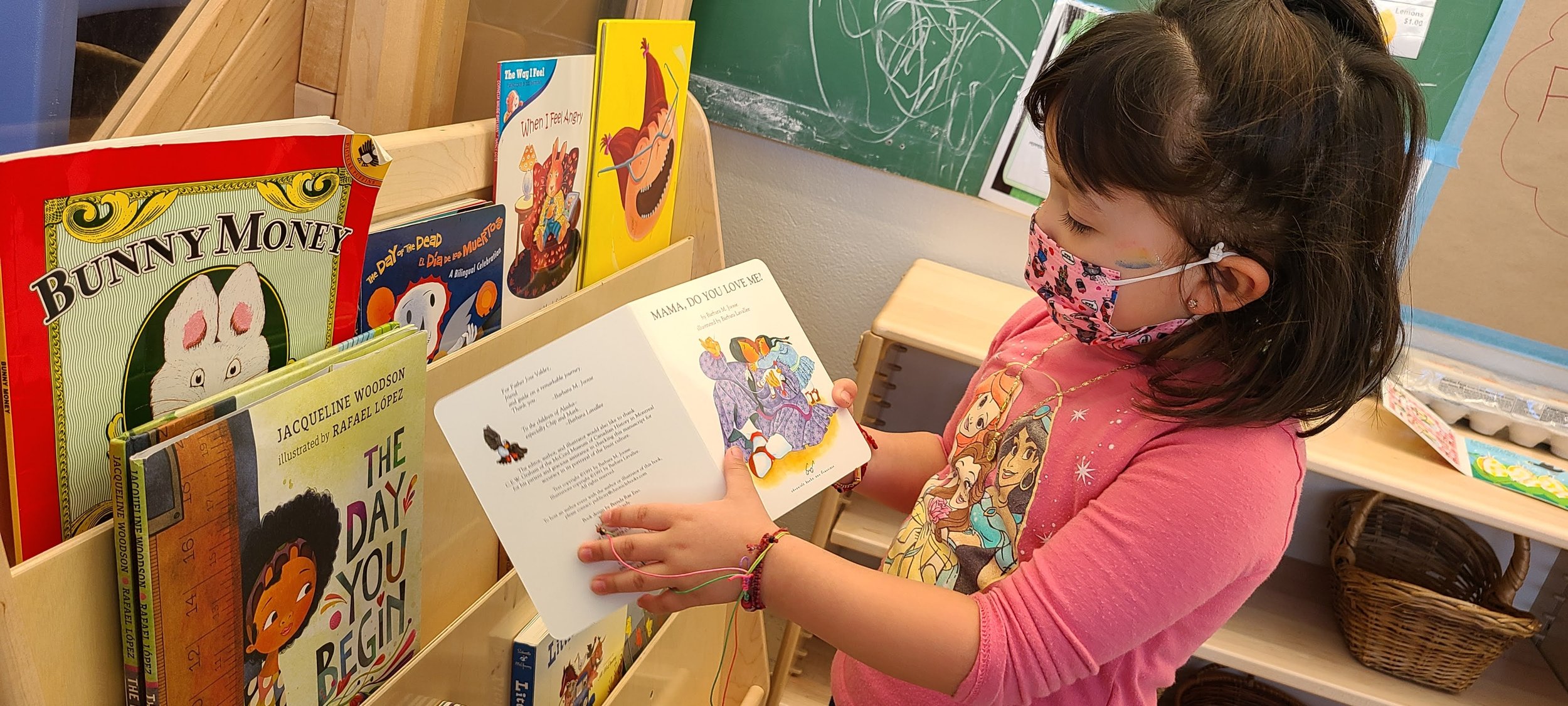
We opened our preschool in the East Bay, and supported our first cohort of pre-K students and families on their way to kindergarten.
Pre-K students celebrate their graduation with a Bridge to Kindergarten.
After a year-long delay that included working with East Bay students and families to prepare for pre-K over Zoom, we were able to open our doors for in-person programming! We are so thankful for the teachers, operations and health staff, students, families, community members, and our health partners, Kaiser Permanente and Tiburcio Vasquez Health Center, who made the opening of our second site come to fruition. Throughout the year, students grew in their early literacy, math, and social-emotional skills. Parents participated in our parent wellness coaching program, meeting monthly in groups for Parent Circles and individually with parent coaches to check-in on goals and share resource needs. We are proud to share that 96% of our families reported being happy to be at The Primary School - East Bay, and 93% of families reported a sense of belonging.
We also partnered with the Tiburcio Vasquez Health Center to provide dental cleanings for all children, and 92% of children who did not previously have a dental home signed up for dental services. Finally, we celebrated our first cohort’s learning and growth with a joyful graduation ceremony and party in June. We are so proud of what these students and families accomplished and we wish them the best in kindergarten at their new elementary schools.
EAST BAY DEMOGRAPHICS
We are proud to partner with a diverse school community. The chart here illustrates the demographic make-up of our East Bay students (48 in total).
79%
of students demonstrated overall age-appropriate social-emotional skills
69%
of students met the end-of-year letter identification benchmark
92%
of students who did not have a dental home have signed up with Tiburcio Vasquez Health Center
Partnering With Parents To Access Health and Education
East Bay parent Keana Reece shares her story navigating health and education systems before finding The Primary School and how our integrated healthcare services and parent program helped Keana and her son.
We partnered with Kaiser Permanente in the East Bay to offer health services on-site and develop collaborative structures for communication and care coordination.
At our East Bay site, we were excited to be able to launch in-person health integration activities with Kaiser Permanente. We partnered with Kaiser Permanente to complete and review developmental and medical screenings; host multi-disciplinary team meetings to coordinate care; open an on-site telehealth hub; and create resources to foster healthy behaviors in school and at home. This included participating in the case management process to ensure families were referred to appropriate services. Kaiser Permanente clinicians also built relationships with our teaching staff and students and showed students how their health care team and teachers could work together with health-focused lessons in the classroom. We look forward to taking the learnings from our first year of in-person implementation with Kaiser Permanente and refining the partnership design and activities in our second year.
A Kaiser Permanente clinician teaches students how to complete a check-up.
100%
of students are up-to-date on vaccinations
100%
of students had an annual well-child check
88%
of students received a vision screening
We continued to partner with Sesame Workshop to implement an integrated literacy-SEL early childhood curriculum and develop a Digital Teacher Platform.
We collaborated with Sesame Workshop and Stanford University to better understand the implementation of the SELF curriculum (Social Emotional Literacy Foundation) through a Research Practice Partnership. This included observations, interviews, and surveys with our early childhood teachers who are using the curriculum in our preschool and pre-K classrooms. We also supported Sesame Workshop’s development of a Digital Teacher Platform that houses the curriculum by piloting the platform and providing feedback. Teachers now report that planning has been simplified; they are able to integrate content across units which allows for deeper student and teacher understanding; and videos, read alouds, and student resources are easily accessible.
“The new Sesame digital platform has helped deepen my understanding of the curriculum. It promotes strong language and literacy development while simultaneously supporting social and emotional learning.”
Denise Laney, Pre-K Teacher at The Primary School - East Bay
STRATEGIC PRIORITY 3
Build a High-Impact, Equity-Centered Organization
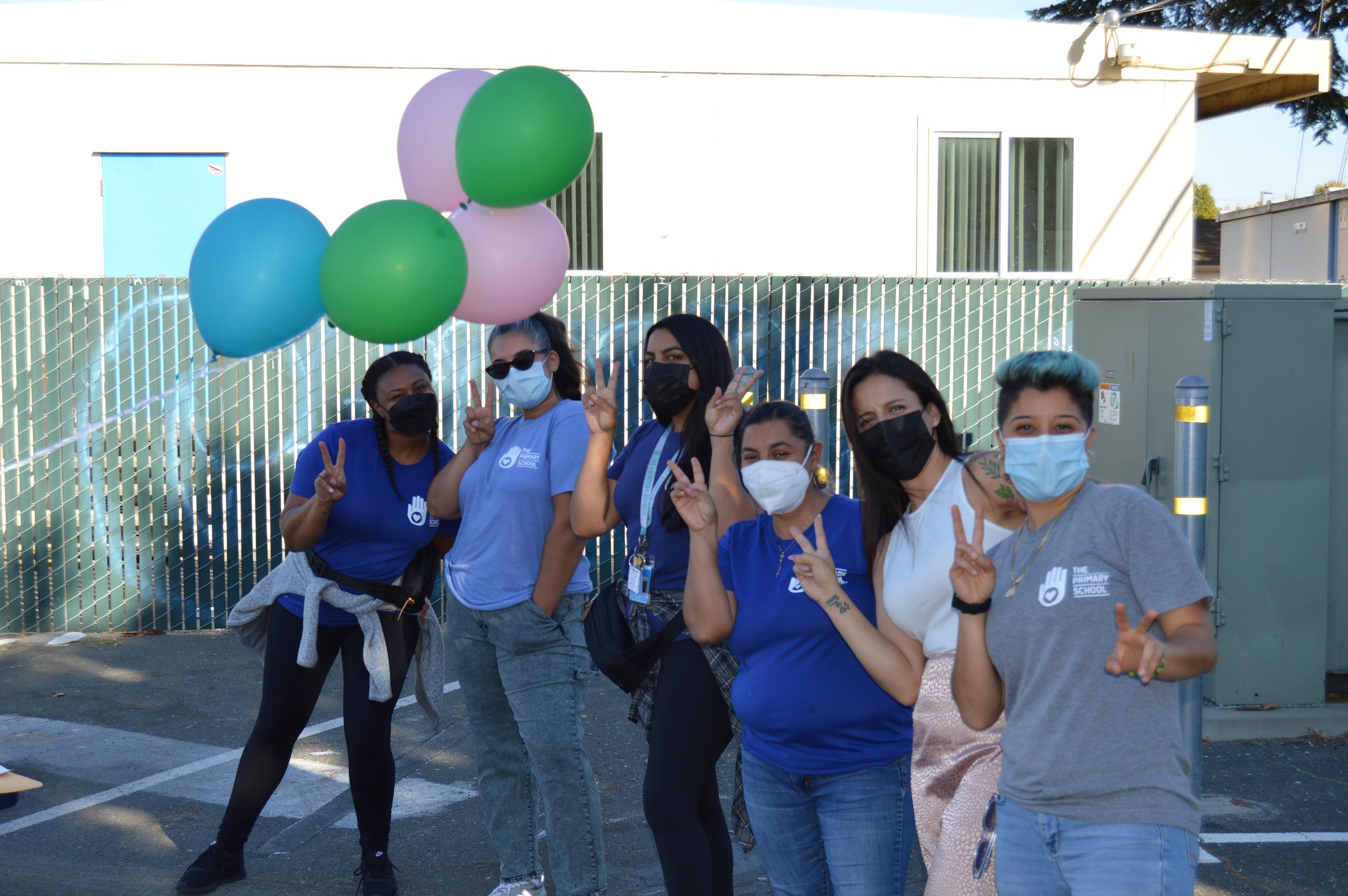
We worked towards our goals in the first year of our three-year plan to improve DEI in our organization and established formal structures to elevate staff voice.
In Fall 2021, we kicked off the first year of the multi-year DEI plan that was developed in 2020–2021. This plan articulates four critical anti-racism pillars based on the equity audit completed in 2020, and includes specific actions and commitments for our organization. Our thirteen member DEI taskforce regularly met with the leadership team to develop data-informed goals and benchmarks, create input and feedback structures, and review progress at the biannual DEI Summits based on our four anti-racism pillars. Thus far, our school program has begun to implement data systems that are easily accessed by the school and health teams, increased the diversity of our staff, and implemented new structures to elevate parent and staff voice.
For example, we have worked on integrating staff voice more formally into decision making structures. Our school site staff elected representatives from various teams including Early Childhood and Elementary Lead Teachers, Associate Teachers, Specialists, and Support Staff to provide input on budget and working conditions, develop structures to promote staff sustainability, and collaborate with school leadership to create a governance plan. With our collaborative efforts, we have established guidelines for working conditions that promote staff well-being.
“One of the things I appreciated [about the DEI taskforce] was that all questions and input were welcomed by everyone who spoke up. It truly felt like a space where voices were being considered and viewpoints from teachers, coaches, admin, etc... were all being taken into perspective. There was a deep culture of listening and proactive work happening in the task force.” – Jenn Torres, Lead Parent Wellness Coach
We established a year-long DEI professional development arc for all staff.
Over the course of the 2021–22 school year, all staff members participated in quarterly DEI professional development sessions that prioritized community building, identity development, and examining the Social Justice Standards from the Teaching Tolerance Anti-Bias Framework. Supporting all staff with resources and professional development is essential to our commitment of advancing equity and anti-discriminatory practices in education and our organization. DEI professional development will continue to be a key strategy for instilling anti-racism practices across our organization.
We established a Board of Directors for our East Bay site and welcomed a new parent board member to the East Palo Alto board.
We are grateful for the partnerships we have created with community, education, and health care leaders to establish our East Bay Board of Directors. Our board members join us from a variety of fields and with diverse professional and personal experiences. We look forward to their expertise and wisdom in navigating our next steps forward for our East Bay site.
In Fall 2021, our first two parent board members joined our East Palo Alto Board of Directors. This spring, one of our inaugural parent board members, Natalie Avelar, completed her term. After involving our school community in a second election process, Moses Herrera, was elected to serve a two year term. We are proud to deepen our commitment to elevating parent voice in our governing structures. Moses Herrera will begin serving alongside continuing parent board member, Rosalinda Fesili, in Fall 2022.
Moses Herrera
Parent Representative, East Palo Alto Board
EAST BAY BOARD
Ana Apodaca
Community and Government Relations Manager, Kaiser Permanente
Isabelle Bibbler Parker
Partner and CFO, Wildflower Schools
Jean-Claude Brizard
President and CEO, Digital Promise
Renee S. Herzfeld
Executive Director, Community Child Care Council (4Cs) of Alameda County
Cristina Huezo
Vice President and Head of Community, Chan Zuckerberg Initiative
Dr. Lucy Phuong
Assistant Physician-in-Chief, Kaiser Permanente
LOOKING AHEAD
Over the past year, we worked closely with our boards, staff, and families to revise and detail organizational priorities as part of a new five-year strategic plan. This strategic plan will include five priority areas for the next five years including specific goals and methods of measurement. We are excited to release our 2023-2027 strategic plan in early 2023 and gear up for this next phase of growth.
JOIN US
VOLUNTEER
Volunteer with us to support our students in East Palo Alto and the East Bay.
Partner with us
Share your expertise or connect with us as potential partners.
HELP US GROW
Support our students and families by investing in our direct service programs or funding R&D.
Thank you!
We are so incredibly grateful for the group of donors – both old and new – who continue to believe and invest in our model and vision. Your support means so much to our students, families, and community!
2021-2022 PARTNERS
DESIGN, LEARNING & DISSEMINATION PARTNERS
Local Partners
ADDITIONAL PARTNERS
Stanford Children's Health
Stanford Office of Child Health Equity
Samaritan House
Legal Aid Society of San Mateo County
City of Hayward
South Hayward Collaborative
La Familia
